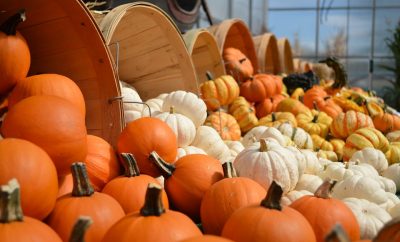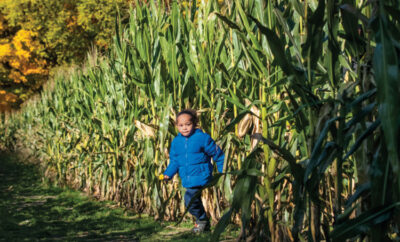Give Houseplants a Summer Vacation Outdoors

These tips make for a successful outdoor summer vacation for your houseplants before transitioning them back inside for the winter. Photo credit: Jo Ellen Meyers Sharp
Most of the plants we grow indoors are tropicals, and they are much more at home in warm, moist climates than in the dry environment by the dining room window. It’s hard to replicate the climate of Central and South America, Africa, Indonesia, India and other exotic lands, but we try.
Fortunately, houseplants experience a bit of their preferred climate when we move them outdoors for the summer. The ambient light and warmth of the season encourage the growth of healthy plants. At the end of summer, the houseplants return to their humble abode indoors, usually larger and more vigorous.
Here are a few things to consider when moving these plants out for the summer and back inside in the fall.
See more: Add Tropical Splendor to Your Indiana Landscape
The Great Outdoors
Once nighttime temperatures stay in the 50s, it’s usually safe to move houseplants outdoors. Do it in baby steps, though.
First, move them to protected, shady locations for a week or two to get them acclimated to outdoor light and temperatures. Too much sun quickly sunburns the leaves of plants that have spent the winter indoors.
Once acclimated, move the houseplants to the environment they need – shade for some plants, sun for some, and part sun or part shade for others, such as Chinese evergreen.
Protect big leaf plants, such as elephant ears or palms, from the wind. The wind can shred and rip large leaves. The wind can also knock plants and their pots over.
Decorate porches, stoops, decks, patios or balconies with houseplants. Place some in a landscape bed with shrubs or perennials to add a different texture and form. Plant summer annuals around the base of the plants for even more beauty.
Take Care
Houseplants outdoors need more water than when indoors. The size of the pot and the material it’s made of as well as the location, wind, temperature and the type of plant determine watering needs. Monitor plants frequently to make sure the soil isn’t dry. When it rains, watering may not be needed as much.
Most plants will grow quickly once outdoors, so regularly apply fertilizer. Always read and follow the label direction for proper application.
Periodically inspect the plants for insects or diseases. Detecting problems early goes a long way in determining the cause and cure. Know what you have before you treat it.
See more: Learn How to Avoid Common Basil and Impatiens Diseases
Indoor Hibernation
Once nighttime temperatures fall into the 50s, prepare to move houseplants back indoors.
Tidy up the plants by removing any damaged leaves or branches. Be sure to wipe the blades of hand pruners or scissors with isopropyl alcohol or a spray disinfectant as you move from plant to plant. This ensures your tools won’t contaminate plants as you move from one to another should one of them have a disease.
Play detective again and inspect the plants to make sure you aren’t going to bring in any insects or diseases. With the garden hose, give the plants a good shower, making sure to rinse the undersides of the leaves, and soak the soil until water runs out the bottom. These steps flush out insects from the plant and the soil.
When ready to move plants indoors, repeat the process of moving them outdoors. In this case, you want to help the plants adjust to less light by moving them to a shady location for a few days. Once indoors, temporarily place the plants where they can get as much light as possible for a week or so. This will help the houseplants acclimate to lower light and the indoor climate before you move them to their usual location. Some acclimation may be necessary in the regular spot, too.
Consider isolating houseplants that spent the summer outdoors for a week or 10 days, especially if you have plants that were indoors all summer. Isolating them reduces the chance insect or disease problems will spread to healthy indoor plants.
Once indoors, houseplant growth rates are slowed, so they need less water and fertilizer.
The diminished light may cause some plants to drop leaves, which can be concerning but is entirely normal. The plant should adjust and regrow leaves. You always want to give houseplants the light exposure they require.
About the Author: Jo Ellen Meyers Sharp, hoosiergardener.com, is available for in-person or remote programs about gardening, native plants, sustainable living and what to avoid planting. Contact her at thehoosiergardener@gmail.com.
See more: Indiana’s 8 All-America Selections Display Gardens Plant Seeds of the Latest Garden Trends













 My Indiana Home is produced for Indiana Farm Bureau members. Our mission is to connect you with the food you eat, the Indiana farmers who grow it and a rural lifestyle that is uniquely Hoosier.
My Indiana Home is produced for Indiana Farm Bureau members. Our mission is to connect you with the food you eat, the Indiana farmers who grow it and a rural lifestyle that is uniquely Hoosier.
Leave a Comment